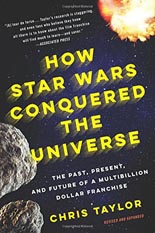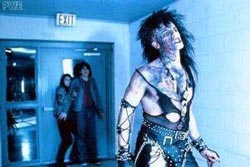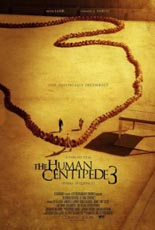
 From the start of his highly peculiar and “100% medically accurate” franchise, writer/director/producer Tom Six promised that The Human Centipede III (Final Sequence) would make the previous two films appear tame. While I disagree with that statement — for sheer gross-outs, 2011’s The Human Centipede II (Full Sequence) still takes the urinal cake — Six has succeeded in making this concluding chapter as unique as II was to the 2009 original.
From the start of his highly peculiar and “100% medically accurate” franchise, writer/director/producer Tom Six promised that The Human Centipede III (Final Sequence) would make the previous two films appear tame. While I disagree with that statement — for sheer gross-outs, 2011’s The Human Centipede II (Full Sequence) still takes the urinal cake — Six has succeeded in making this concluding chapter as unique as II was to the 2009 original.
For this bitter-tasting end, Six goes meta, casting the madmen of parts I and II as the co-leads of III, albeit playing completely different characters who comment upon those movies and their mouth-to-anus concept as a hole. Er, excuse me: as a whole. All the action goes down (as it were) at Texas’ most inefficiently and ineffectively run penitentiary, the George H.W. Bush State Prison. That concrete jungle is ruled with a Teutonic fist by the vile, megalomaniacal Bill Boss (the first Centipede’s Dieter Laser, still channeling Christopher Walken and a lizard), a bald bully of a man who takes less pleasure in sexually harassing his secretary (porn star Bree Olson, Not Bill Cosby XXX: Puddin’ My Dick Where It Don’t Belong) than he does torturing his inmates: waterboarding, castration, breaking a guy’s “masturbation arm.”
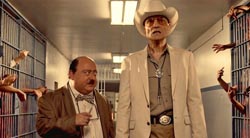 Boss’ predilection for abuse negatively impacts the facility’s medical budget, thus annoying its roly-poly accountant, Dwight (Laurence R. Harvey, Centipede II’s miserable copycat). As a solution toward solvency, Dwight pushes Boss to consider taking a cue from the Human Centipede films and build their own 500-prisoner version as “the ultimate deterrent.” Posits Dwight, “It’s brilliant! We don’t gotta deal with their shit no more. They just gotta deal with each others’.”
Boss’ predilection for abuse negatively impacts the facility’s medical budget, thus annoying its roly-poly accountant, Dwight (Laurence R. Harvey, Centipede II’s miserable copycat). As a solution toward solvency, Dwight pushes Boss to consider taking a cue from the Human Centipede films and build their own 500-prisoner version as “the ultimate deterrent.” Posits Dwight, “It’s brilliant! We don’t gotta deal with their shit no more. They just gotta deal with each others’.”
That the Centipede trilogy isn’t for everyone is an understatement, but its poopy-and-goopy reputation as irredeemable trash has been overstated by those who never have seen it, never planned to and never will. As abhorrent as you think them to be — and I’m not denying their explicitness in shock value, although more goes unseen than you’d expect — there’s an art to them. Really. And it does not lie beneath the surface, either.
In this capper, what Six — who plays himself, brought in to consult for the en masse surgical procedure — has amped up is not the red-and-brown gore, but the black comedy. Every minute of this Final Sequence is played for laughs as a post-Guantanamo satire of capital punishment, criminal rehabilitation, politics for profit and, to a lesser degree, meme culture. Whereas the first film actually showed remarkable restraint (believe it), going over-the-top is entirely Six’s point here. And the point is more than made; the message is impossible to miss. That it is told with jokes about stoma and Chron’s disease attached is … well, “brave” is one word for it.
With Final Sequence’s final sequence, the trilogy achieves closure, even if that leaves us with an infinite loop. And sew it goes … —Rod Lott



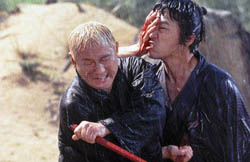
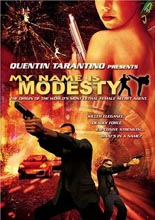
 Despite toiling as a sexy spy, the comic-strip character Modesty Blaise never quite caught on in America. A 1966 movie based on
Despite toiling as a sexy spy, the comic-strip character Modesty Blaise never quite caught on in America. A 1966 movie based on 

